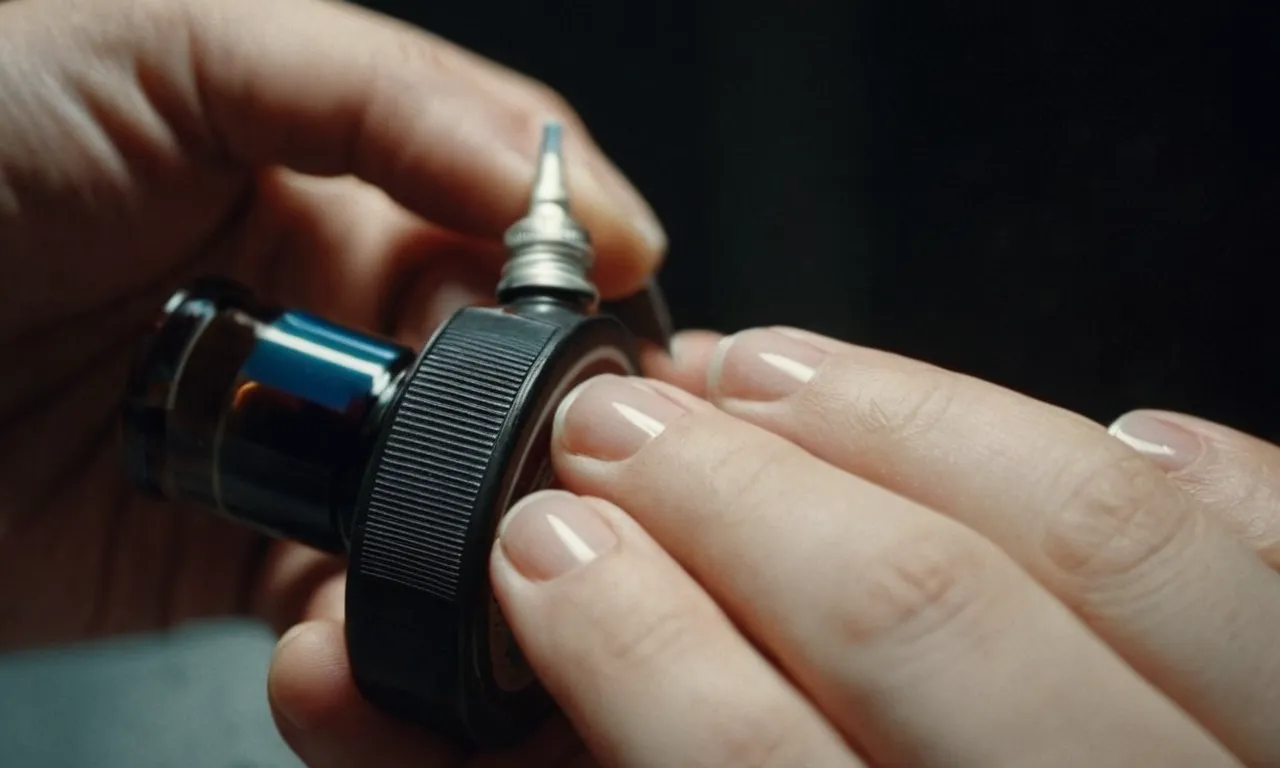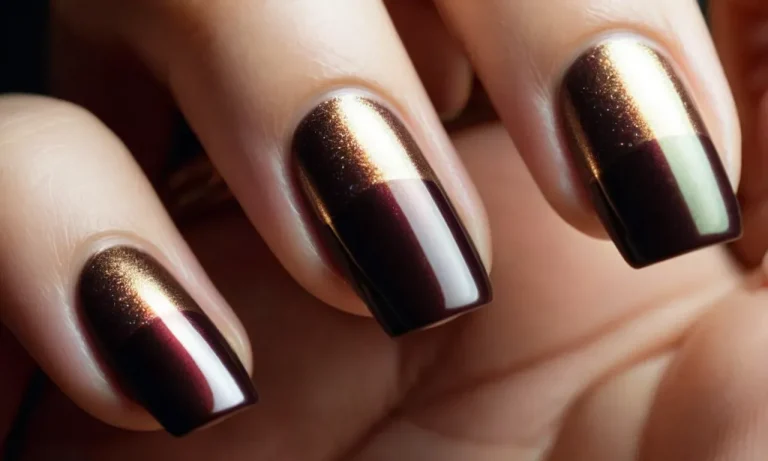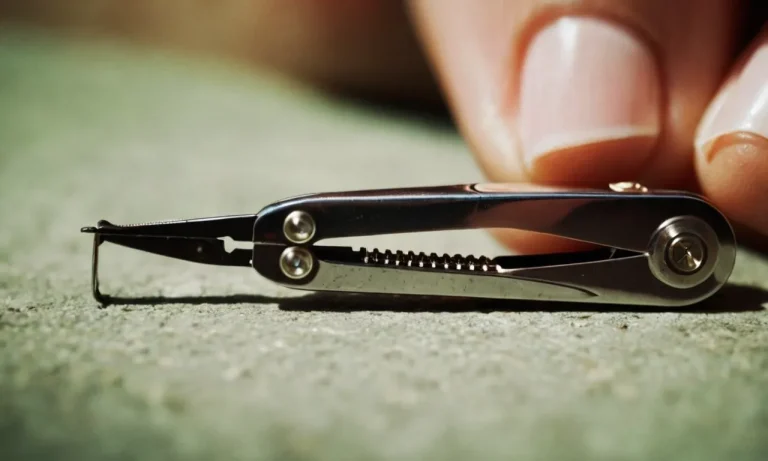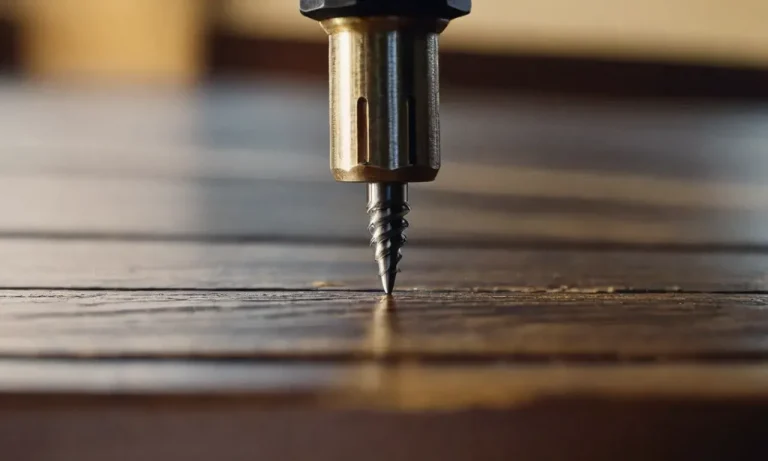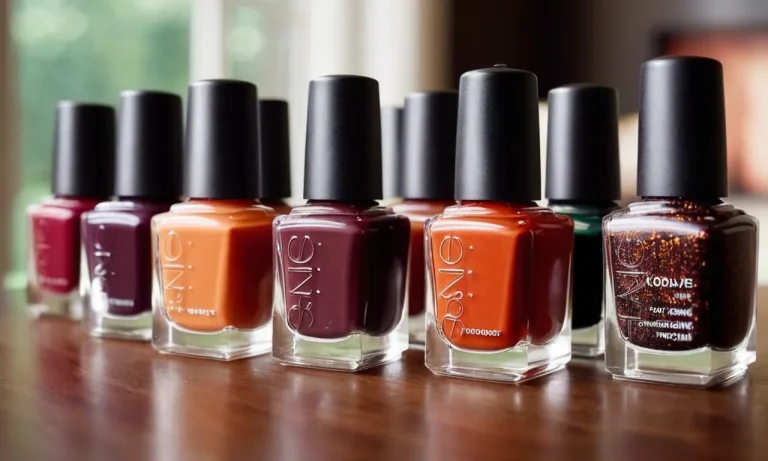Can I Use Nail Glue On A Cut?
If you’ve cut yourself and don’t have access to sterile bandages or medical glue, you may be wondering if household items like nail glue can be used to close the wound. Using the wrong adhesive carries risks of infection and other complications, so proceed with caution.
If you’re short on time, here’s a quick answer to your question: Using nail glue or super glue to seal cuts is not generally recommended. These products are not sterile and could lead to infections or other issues.
It’s better to use sterilized medical glue, butterfly bandages, or seek professional medical treatment whenever possible.
What Are the Risks of Using Nail Glue on Cuts?
Risk of Infection
Using nail glue to seal a cut comes with the risk of trapping bacteria inside the wound, leading to infection. Nail glue is not sterile and can introduce microorganisms like bacteria and fungi into the cut (1).
These can multiply inside the blocked wound, releasing toxins and inflaming surrounding tissue (2). An infected cut may ooze pus, swell, become red, hot and painful. Severe infections can spread to the bloodstream. See your doctor immediately if a “glued” cut shows signs of infection.
Toxic Chemical Risks
Nail glues contain cyanoacrylate, an acrylic resin that can irritate skin and eyes (3). Fumes released while gluing a cut may cause eye watering or nose/throat discomfort. The glue itself can burn wound tissue it contacts.
This delays healing, increases scarring risk and introduces chemicals into the bloodstream with unknown health effects. Nail glue also blocks oxygen from reaching the wound, preventing the growth of new skin cells.
In rare cases, people have severe allergic reactions to nail glue chemicals resulting in rashes, trouble breathing, or anaphylaxis (4). Multiple brands have been recalled after customers reported chemical burns from their nail glue products (5).
Improper Wound Healing
When nail glue seals a cut, it blocks drainage of fluid and debris that are a natural part of the healing process. This causes inflammation and raises the risk of infection (6). It can also lead to abnormal scarring since new skin cells cannot migrate across the closed wound to cover damaged tissue.
Early removal of the glue reopens the cut and introduces more bacteria. This sets back the healing timeline and may cause the wound to heal unevenly.
Medical grade skin adhesives are a safer alternative for minor cuts. These allow some oxygen penetration for cell regrowth. Yet medical supervision is still advised to prevent operational wounds from sealing over top of lingering contamination or foreign material (7).
When Is Nail Glue an Option for Cuts?
Using nail glue on cuts can seem like a quick and easy solution, but it’s generally not recommended by medical professionals. Here’s a closer look at when nail glue may or may not be appropriate for lacerations.
Minor Cuts
For very minor cuts, scrapes, and splits in the skin, nail glue can temporarily bring the edges of the wound together. This can provide some pain relief and protect the area while it starts healing. However, nail glue isn’t sterile and doesn’t allow drainage, so it should only be used as a very short-term solution.
Deeper Cuts
For deeper cuts that go through multiple layers of skin and may require stitches, nail glue should not be used. The glue won’t hold the wound closed properly. Bacteria and debris can also get trapped inside, leading to increased infection risk. These types of cuts need proper medical treatment.
Special Circumstances
In certain circumstances, using nail glue on a cut may be warranted for a limited time before proper medical treatment is available. For example, if you sustain a significant laceration while hiking and are several hours from the closest hospital, sealing the wound with glue could help control bleeding during the trip out.
But this is a last resort – medical attention should still be sought as soon as possible.
Signs of Infection
If a cut has been closed with nail glue, watch closely for signs of infection over the following days, including:
- Increasing pain or swelling
- Redness spreading from the wound
- Pus or foul-smelling drainage
- Fever
These require prompt medical care – the nail glue will need to be removed so the infection can be treated. Don’t reapply glue over an infected wound.
The Takeaway
While using nail glue on minor cuts may seem harmless, it’s generally not recommended. For deeper lacerations, glue should be avoided completely. It’s best to have cuts properly cleaned, closed, and monitored by a medical professional whenever possible to limit infection risk and promote proper healing.
Using Nail Glue on Cuts Safely
Disinfect the Area
When using nail glue on a cut, it’s crucial to properly disinfect the area first. This helps prevent infection and allows the glue to adhere better. Start by washing your hands thoroughly with warm soapy water. Then, clean the cut with rubbing alcohol, hydrogen peroxide, or an iodine solution.
Let the cut air dry completely before applying any glue, as moisture will weaken the bond. For extra protection, you can apply a thin layer of antibiotic ointment like Neosporin before gluing the cut closed. Just be sure the ointment is fully absorbed into the skin first.
Use Thin Layers
When working with nail glue on skin, it’s best to apply multiple thin layers and allow each layer to fully dry before adding the next. Thick globs of glue may not cure properly and can pull up skin when removed later. Start with a tiny drop, spreading it thinly across the length of the cut.
Give it 2-3 minutes to dry. Then follow up with another thin layer if needed to fully seal the cut. Using thin layers prevents moisture from getting trapped under the glue, which can delay healing. Going slowly also gives you better control over placement.
Allow Time to Dry Properly
Patience is key when using nail glue as a wound sealant. Don’t rush the drying process or try to pull at the glue too soon. Most nail glues take a minimum of 60 seconds to initially set. But a full cure can take upwards of 5 minutes or longer, depending on the formula, layer thickness, and environment.
Avoid getting the glued area wet during this time. Exposure to water can prevent the glue from curing correctly. It’s also important not to peel, pick at, or flex the glue while it’s drying. This can cause the seal to break prematurely.
Let the glue fully harden and bond with the skin before resuming normal activity. And don’t worry – nail glue peels off skin painlessly once cured!
Seeking Proper Medical Care for Cuts
When to See a Doctor
Most minor cuts can be safely treated at home without needing to see a doctor. However, some cuts do require professional medical attention. Here are some general guidelines on when you should see a doctor for a cut:
- The cut is very deep or long
- The cut is gaping open
- You can see fat, muscle, bone, or tendons
- The cut is on your face, hand, foot, or genitals
- The cut continues to bleed heavily after 10 minutes of pressure
- The edges of the cut are jagged or torn
- There is a foreign object stuck in the cut
- The cut feels numb or tingles
- You have not had a tetanus shot in the past 5 years
- Signs of infection develop, like increasing pain, redness, swelling, oozing pus, red streaks, fever
For any of these scenarios, it’s important to see a doctor right away. Deep cuts in particular can damage nerves, tendons, and muscles and may require stitches, steri-strips, or even surgery. Leaving them untreated raises the risk of dangerous complications like excessive bleeding, infection, or impaired function.
Don’t take chances with deep cuts – get evaluated by a medical professional.
Wound Care at Home
For minor cuts and scrapes, you can usually provide adequate care at home. Follow these tips:
- Clean the cut thoroughly with mild soap and warm water. Rinse away dirt and debris.
- Apply firm, steady pressure with a clean cloth or bandage for 5-10 minutes to stop bleeding.
- Cover with an antibiotic ointment and bandage to prevent infection.
- Watch for signs of infection like increasing redness, swelling, oozing.
- Change the bandage and apply more antibiotic ointment daily.
- Keep the cut moist and covered until fully healed.
Most small cuts take 2-3 days to heal with proper at-home care. If the cut does not seem to be improving after 5 days, or you notice any signs of infection, it’s best to see your doctor. They can determine if you need an oral antibiotic or prescription topical ointment to clear up an infection.
The key is knowing when a cut requires professional medical treatment. For serious deep cuts, don’t delay – go to an urgent care or emergency room right away for proper cleaning and closure. This can prevent complications and long-term damage.
Alternatives to Nail Glue for Cuts
Sterile Medical Glue
Sterile medical glue can be a great alternative to nail glue for closing and protecting minor cuts. Unlike nail glue which may contain chemicals meant for external use, sterile glues made specifically for wound care can safely bond skin.
Popular options like Dermabond and SurgiSeal provide strong, flexible seals over lacerations.
Medical glues are often composed of cyanoacrylate, which rapidly forms strong bonds with skin tissue proteins when exposed to moisture. This allows for an instant closure that doesn’t require clamps or stitches.
Studies show cyanoacrylate medical glues have comparable efficacy and infection rates to traditional sutures in low tension areas.
When shopping for sterile glues, look for products clearly labeled for medicinal wound closure. These are regulated by the FDA to ensure safe ingredients and sterilization procedures. Check that the glue has not expired prior to use.
Follow all manufacturer directions closely when applying to maximize safety and hold strength.
Butterfly Bandages
Butterfly bandages or closures can securely bring the edges of a minor cut together while protecting the area. These adhesive strips resemble large band aids but contain broader wings that extend out on either side of the central pad.
To use a butterfly bandage, first clean and dry the laceration site thoroughly. Place the central padded section directly over the cut, then smooth the adhesive wings down firmly onto skin on both sides. This gently pulls the wound margins toward each other for proper alignment and healing.
Butterfly closures are available in plastic and fabric types. Both effectively aid closure, but plastic styles typically adhere more strongly to skin whereas fabric versions prevent overlying skin maceration.
As an affordable, easy-to-use option, butterfly bandages serve as great additions to any first aid kit for managing simple cuts at home.
Steri-Strips
Steri-Strips represent thin strips of medical tape designed to hold wound edges together. They resemble extra long band aids, consisting of a porous middle section bonded to skin-tone colored adhesive sections on each end.
| Pros | Cons |
| – Strong hold strength | – Can be tricky to align perfectly |
| – Allows for flexible movement | – Not ideal for highly mobile areas |
| – Waterproof & can withstand showering | – Adhesive may irritate sensitive skin |
To apply Steri-Strips, first ensure the laceration is clean. Place the non-adhesive section directly over the length of the wound, then apply the sticky ends to healthy tissue on either side to anchor. This pulls the skin margins together to assist natural closure.
Proper technique produces an Incredibly strong seal able to withstand tension across joint flex creases.
Conclusion
While using household nail glue to seal cuts may seem like a quick fix, it does carry health risks. Sterile medical glue, butterfly bandages, plasters, or bandages are safer options if available. For deep cuts or those showing signs of infection, seek professional medical care right away.
With proper wound care at home and attention to signs of complications, minor cuts can often heal well on their own over time.

